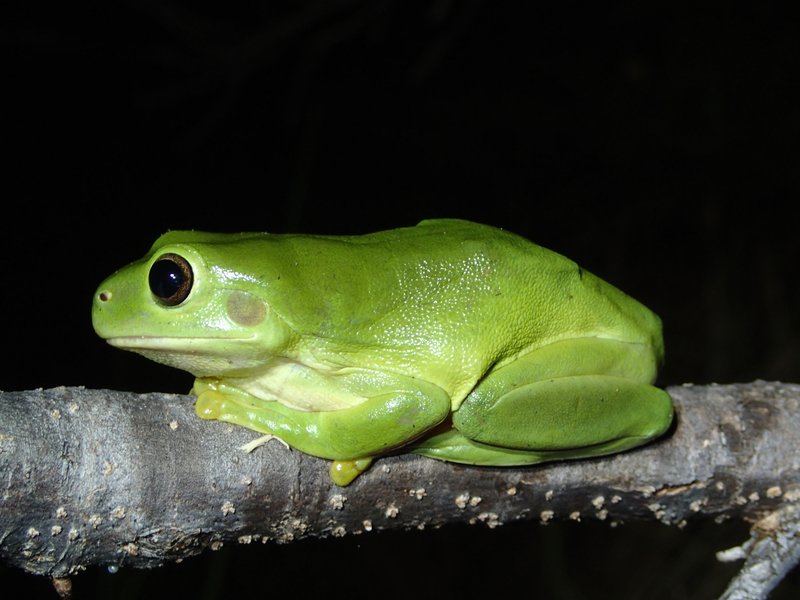Green Tree Frog

© Australian Museum
Description
A large species of frog reaching up to 11 cm in body length. It has a green back, sometimes with several small white spots. The belly is white. The pupil is horizontal and the iris is gold. Fingers and toes are three-quarters webbed, both with large discs. Inland NSW individuals can have a blue-green back, and some northern populations have yellow on the fingers, toes, webbing, and undersurfaces of the arms and legs.

Green Tree Frog, Litoria caerulea, in water
Image: Stuart Humphreys© Australian Museum
Similar Species
Looks similar to Litoria cavernicola, Litoria chloris, and Litoria splendida in its distribution. Litoria cavernicola lacks a skin fold over the side of the head; Litoria chloris has a red iris instead of gold; and Litoria splendida has big glands over the entire head and above the shoulders, as well as having white or yellow spots.
Distribution
Found in northern WA, northern NT, northeastern SA, and most of QLD and NSW.
Breeding Biology
Eggs are laid in clusters that float on the surface of the water in flooded ditches and small temporary ponds. Tadpoles can reach a total length of up to nearly 7 cm, and are dusky brown in colour. They swim throughout all levels of water bodies, and take at least one month to develop into frogs, although tadpoles in colder areas may take much longer. Breeds during spring and summer.
Download the FrogID Mobile App
FrogID is a national citizen science project that is helping us learn more about what is happening to Australia’s frogs. Download the FrogID app and you can discover which frogs live around you and help us count Australia's frogs!
Download Today

